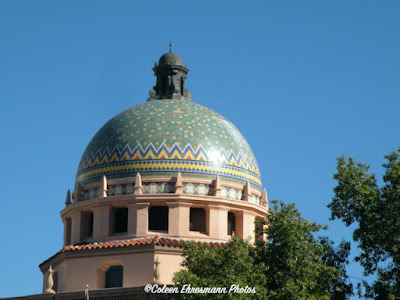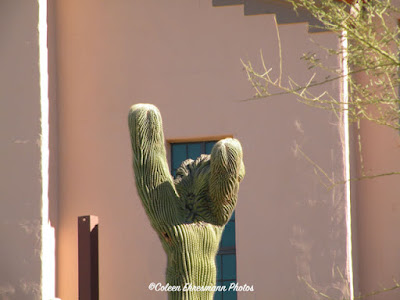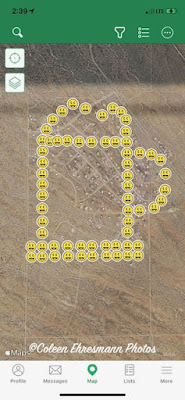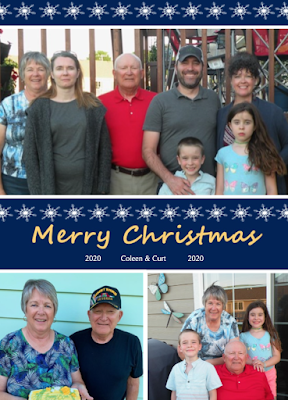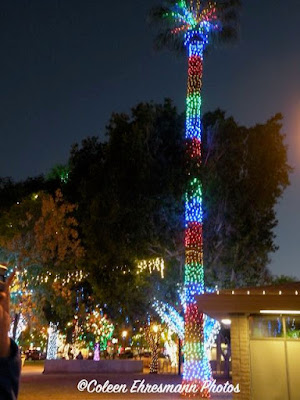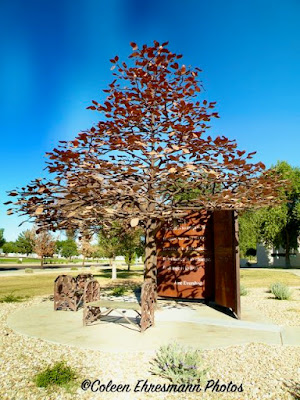Earlier this month we hitched up the travel trailer and headed south to Tucson for a few days of desert geocaching. The temperatures were perfect and all went well, thus making for another good trip. By the end of this post, your question might be answered of why do we geocache in the desert around Tucson.
This is the end of the season for growing and harvesting cotton. Some of the fields still have some cotton boll remains, but the majority of the cotton has been picked, baled, and hauled away.
This photo shows a strip of cotton plants that missed the cotton gin/combine. The plants are loaded with full white bolls. I am betting the field will be plowed and ready for the next crop when we return to the area in January.
Hubby had asked on our November trip if I had noticed the painted naked bush trunks? No, I had not. So on the November trip, he stopped long enough for me to get a photo. There is a green one not in this photo. Don't know why they are painted. Don't know who painted them. Just one of those interesting things that catches the eye, and if you are lucky, the camera lens.
The area we have been caching has many signs warning of open range and we have seen evidence of the cattle and have seen a few. This day was the first time we had seen horses and mules. This small herd had just been given some hay and most of them were very intent on getting their share.
All except this pretty white horse. He/she was outside the fence and the two guys and a dog were trying unsuccessfully to get him/her back through the open gate. We did not stick around to find out if their endeavor was successful.
The desert is very dry. This area has many chollas and prickly pear cacti along with pokey bushes. Most of the geocaches were a container under a pile of rocks, next to the road.
And this was one of the better roads! There are roads on which I will not drive the jeep. I do not want to be the one that drops it in a wash and can't get out. So far, that has not happened.
We have come across a few temporary and a few permanent residences in this desert area. A camper (travel trailer) sits in a cacti cleared area. These folks built a deck on a platform allowing them a great view of the area. No running water. No electricity. No close neighbors. (This was one of the newer campers we saw. More of them were from the last century.)
And then we came upon this tiny house or park model which had recently been moved out there. It is still on wheels, but the evidence near by led us to believe someone was using it. Hardier souls than I.
The end result of some of our reasons for driving in the desert. There are five geo-arts in this area. Three of them are completed.
We probably won't look for the rest of the green circles on this art. The jeep is complete as is the hill it is sitting on, and then some.
These three arts and part of another are the result of 4 trips to the area. One more day in January and we should have the five completed. It is a great social distancing activity, giving us some exercise, some 'quality' time together, and an opportunity to be outside enjoying nature. We are blessed.






